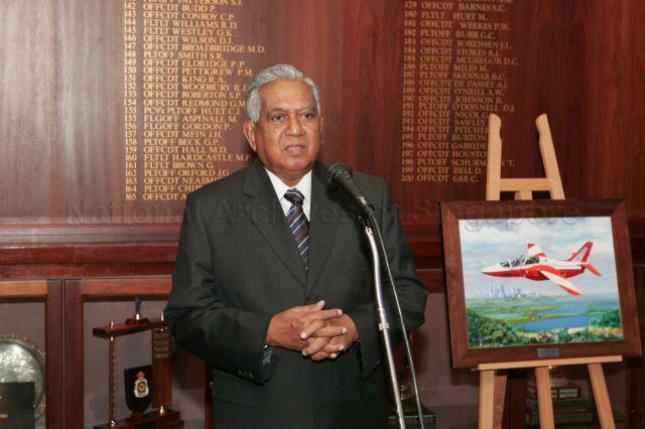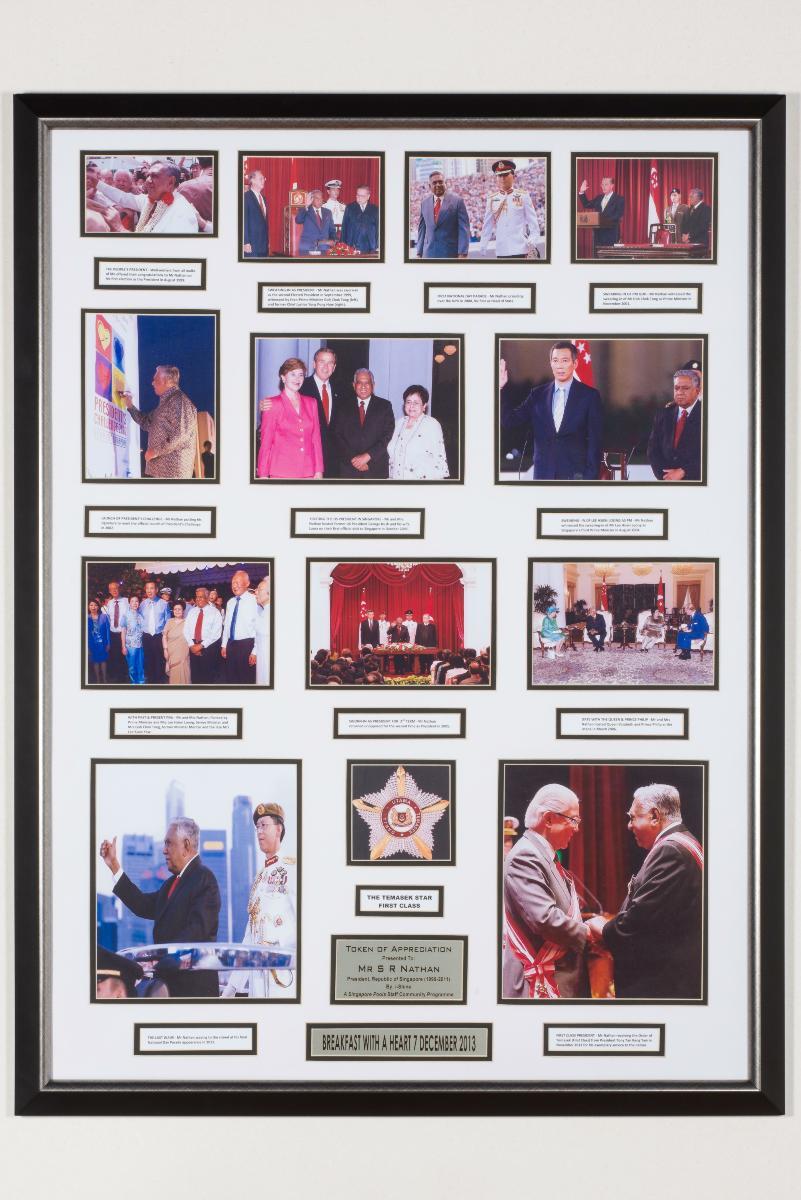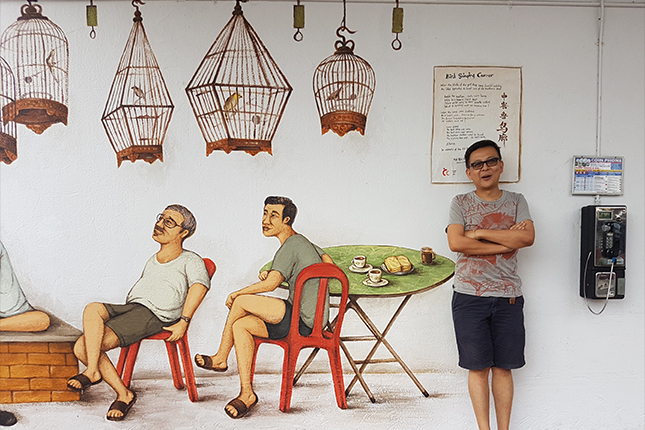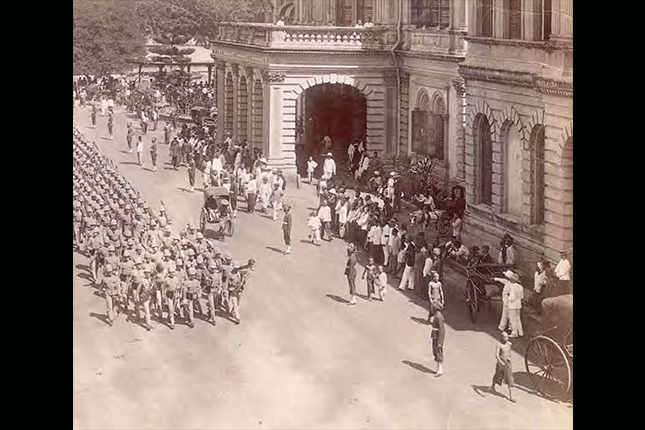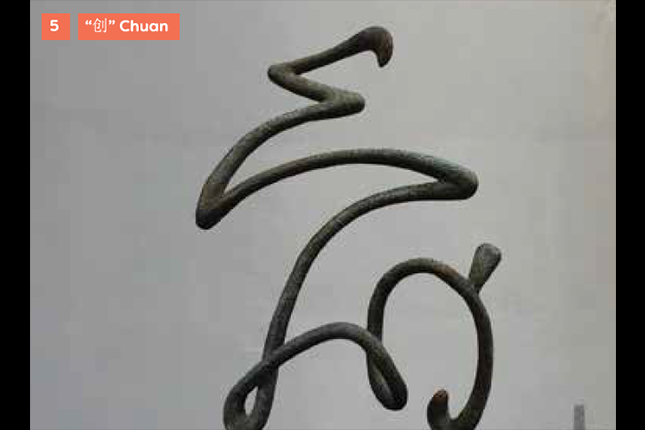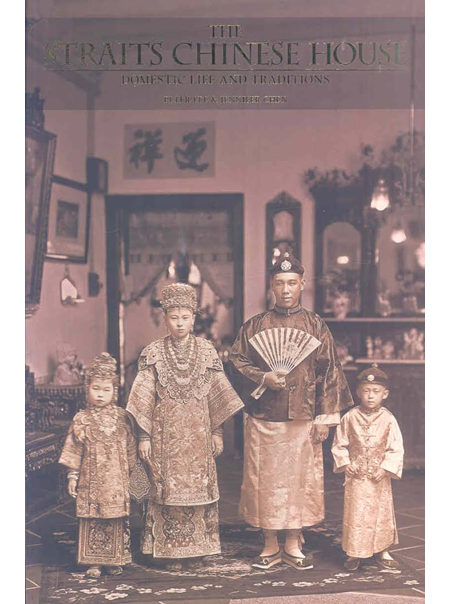Early Life
S R Nathan – full name: Sellapan Ramanathan – was born on 3 July 1924. Although born in Singapore, much of Nathan’s childhood was spent in the riverine town of Muar, Johor, after his father uprooted the family because of a scrape with the law that resulted in him losing his job. Still, Nathan’s father soon managed to secure a job as a lawyer’s clerk for a firm that serviced rubber plantations in their new hometown. By the time Nathan turned eight, however, the Great Depression was well on its way to crippling the industrialized world. Much to his dismay, he was sent back to Singapore alone where he lived with his father’s eldest brother to continue his education. But a few months later, Nathan and his family were reunited again. Amidst a declining rubber industry, Nathan’s father had again lost his job and accrued more debts with the local moneylenders in Muar, needing to move the family back to Singapore as quickly as possible.
His father had a hard time securing a proper job and took on many odd jobs to tide over the growing family of three daughters and two sons. After a long and desperate search, he finally found a job as a supervisor in a quarry in Changi. Sadly, the happiness was short-lived as Nathan’s father often drank away his salary and came back empty handed during the weekends. Then, just short of Nathan’s ninth birthday, his father suddenly committed suicide.
After the tragedy, Nathan’s uncle took the family in under familial obligation. While residing with them, Nathan attended Anglo-Chinese Primary School and Anglo-Chinese Middle School, where he maintained good academic standing. However, following an incident in Standard Five, Nathan was expelled. Although his mother did not say much about his dismissal, Nathan knew she was upset. Fortunately, his eldest cousin managed to enrol Nathan in Rangoon Road Afternoon School, and later Victoria School.
As luck would have it, at the age of 16, Nathan found himself in another hapless situation that saw him face expulsion from school yet again. This time, he was petrified at the prospect of telling his mother and hurting her again, so he decided to run away. Nathan left home to work at an architectural firm called Arbenz & Co, but soon left his job there in fear of running into other family members who worked in the area. He found himself moving back to Muar and working as a hawker’s assistant before he was able to find work as a clerk. He dearly missed his family but was determined not to go back home until he had achieved something that would make them proud of him. In the midst of the Japanese Occupation, Nathan crossed the heavily manned Johor-Singapore border and reconciled with his mother and family.
Nathan spent most of the Japanese Occupation in Muar, where a Japanese lieutenant tasked him with chores and duties. The very same lieutenant also gifted him with an English-Japanese dictionary, encouraging him to learn Japanese. Soon, he excelled as a translator and interpreter, working for the top official in the Japanese Civilian Police.
Career
After the end of World War II, Nathan decided to return back to the academic path that he fell off of in his youth. He went on hiatus from his job as a clerk at the Public Works Department to pursue a diploma at the University of Malaya. With the assistance of a bursary from Shell, 30-year-old Nathan graduated from the first ever cohort with a distinction in his Diploma in Social Studies in 1954. There was no doubt of his outstanding achievement: his final year dissertation in school led to the establishment of a new and pioneering government department. He had done extensive studies and research that revealed the issue of lodging housekeepers in the dock area running a system of debt enslavement through the Asian merchant seamen who were awaiting their next shipboard employment. Mr Nathan’s research findings were attended to by the then Chief Minister, whose government then set up the Asian Seaman’s Registry. In 1956, Nathan was appointed as the first Asian Seaman’s Welfare Officer. Prior to this appointment, Nathan had been working in Tan Tock Seng Hospital as an almoner – the first man in Singapore to have filled a medical social work post.
In 1958, 34-year-old Nathan married his childhood sweetheart Urmila Nandey, or Umi, as he fondly referred to her. A teacher by profession, Umi was courted by Nathan for some 16 years. Although 29-year-old Umi’s and Nathan’s courtship faced many challenges due to their being from different linguistic background (he was Tamil and she Bengali) and Umi’s father being a formidable man, their relationship grew to be one of persistence against the odds.

c.1963 (Image from National Archives Singapore)
After a few years as an Asian Seaman’s Welfare Officer, Nathan was seconded to the Labour Research Unit (LRU) as an assistant director. The LRU was an autonomous body created to assist the National Trades Union Congress (NTUC) with research and industrial negotiations during a time of industrial unrest and strikes. Within a few years of joining the unit, he was promoted to director. In 1964, Nathan was conferred the Public Service Star (Bintang Bakti Masyarakat) for his valuable public service to the people of Singapore.
By 1966, Nathan was promoted to the Administrative Service where his postings involved the position of Permanent Secretary in both Ministry of Foreign Affairs and the Ministry of Defence. He was awarded the Public Administration Medal (Silver) (Pingat Pentadbiran Awam – Perak) in 1967 for his outstanding efficiency and competence in his capacity.
At the Ministry of Defence, he was also the director of the Security and Intelligence Division (SID) from 1971 to 1979. It was during his tenure as SID’s chief that saw him deal with the hijacking of the Laju ferry in 1974 – among a number of other terrorism incidents that occurred in Singapore then. The incident played out over eight consecutive days when four hijackers from the Japanese Red Army and the Popular Front for the Liberation of Palestine held those on board the ferry hostage. Through intense negotiations that lasted eight days, Nathan managed to negotiate for the safe release of the ferry’s crew. He then led a 13-member delegation that accompanied the hijackers on a flight to Kuwait as guarantors of their safe passage. This incident saw him decorated with the Meritorious Service Medal (Pingat Jasa Gemilang) in 1974 for his resource, devotion to duty, and service marked by exceptional ability, merit and exemplary conduct.

(Image from National Archives Singapore)
In the early 1980s, Nathan held directorship in several other companies such as the Singapore Mint Pte Ltd, The Straits Times Press (London) Ltd, Singapore Press Holdings Ltd and Marshall Cavendish Ltd. From 1983 to 1988, he was Chairman of the Hindu Endowments Board, where he was instrumental to the setting up of the Singapore Indian Development Association (SINDA) as founding member, as well as term trustee until 1999.
In 1988, Nathan was appointed Singapore’s High Commissioner to Malaysia before becoming ambassador to the United States two years later. Nathan expertly and astutely manoeuvred both appointments that transpired against strained political ties. Just having stepped in as High Commissioner, he had to manage tensions with Malaysia following Israeli president Chaim Herzog’s visit to Singapore. As Ambassador, he had to manage diplomatic crises such as the Michael Fay vandalism and caning controversy that happened on his watch – he even appeared on the Larry King Live show to defend the country’s point of view and stand.
Upon his return from the US in 1996, Nathan was made Ambassador-at-Large and appointed director of the Institute of Defence and Strategic Studies (IDSS) at the Nanyang Technological University. He also concurrently held the position of pro-chancellor of the National University of Singapore.
Presidency
In 1999, then President Ong Teng Cheong declared his decision to step down at the end of his term. After being asked to consider running for office by public figures such as Lee Kuan Yew and former president Wee Kim Wee, 75-year-old Nathan who had already announced retirement, came out of it to run for, and be elected President. He was sworn into office on 1 September 1999, and re-elected for a second term without contest on 17 August 2005.

c.2000 (Image from National Archives Singapore)
In the course of his two terms as President, Nathan’s notable acts include the founding of the President’s Challenge in 2000, a series of community-based fundraising events for charity that has raised more than S$100 million between 2000 and 2011 for 500 beneficiary organisations; his gracious hosting of about 50 heads of state and over 100 prime ministers and important delegations on official visits to Singapore; and his approving of the government’s use of S$4.9 billion from national reserves to fund the anti-recessionary cushioning in light of the global economic downturn occurring then – marking the first time in history the government was allowed to dip into the reserves.

c. 2005 (Image from National Archives Singapore)
At the end of his second term as Singapore’s sixth president, Nathan cited his age as one of the reasons and announced that he would not be seeking a third term. He stepped down in August 2011, and was succeeded by Tony Tan.
Post-Presidency
Even after stepping down as president at 87 years of age, Nathan did not slow down. He took up appointments of distinguished senior fellow at the Institute of Southeast Asian Studies and at Singapore Management University’s School of Social Sciences. In 2011, he established the S R Nathan Education Upliftment Fund meant to support needy students. In the same year, he published his memoir An Unexpected Journey: Path to Presidency. In 2012, the National University of Singapore launched the S. R. Nathan Professorship in Social Work in his honour. Separately, as a tribute to Nathan’s contributions to the country, the Institute of Policy Studies set up the S. R. Nathan Fellowship for the Study of Singapore in 2013. The year of 2013 was a eventful year: Nathan published his second memoir S R Nathan: 50 Stories from My Life and a children’s storybook, The Crane and the Crab; and the year end of 2013 saw Nathan being conferred Order of Temasek (First Class), the nation’s highest award at the National Day Awards investiture in recognition of his contributions as an outstanding civil servant.
In April 2015, Nathan suffered a stroke but was discharged from the hospital three weeks later.
On the morning of 31 July, Nathan suffered a second stroke and three weeks later, on 22 August, he passed away at Singapore General Hospital at 9.48am.
By Gayathiri Chandramohan
Notes




